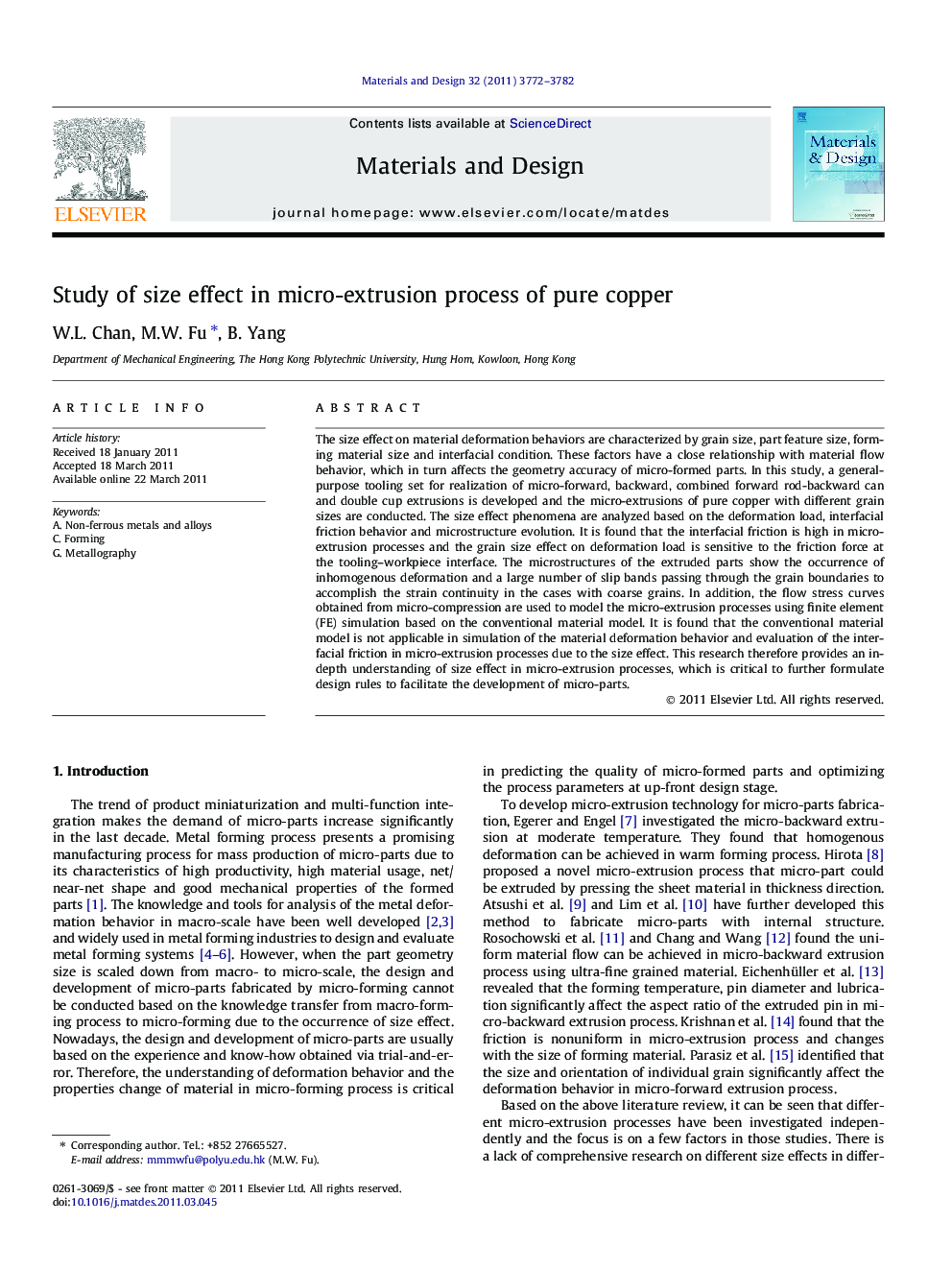| Article ID | Journal | Published Year | Pages | File Type |
|---|---|---|---|---|
| 831501 | Materials & Design (1980-2015) | 2011 | 11 Pages |
The size effect on material deformation behaviors are characterized by grain size, part feature size, forming material size and interfacial condition. These factors have a close relationship with material flow behavior, which in turn affects the geometry accuracy of micro-formed parts. In this study, a general-purpose tooling set for realization of micro-forward, backward, combined forward rod-backward can and double cup extrusions is developed and the micro-extrusions of pure copper with different grain sizes are conducted. The size effect phenomena are analyzed based on the deformation load, interfacial friction behavior and microstructure evolution. It is found that the interfacial friction is high in micro-extrusion processes and the grain size effect on deformation load is sensitive to the friction force at the tooling–workpiece interface. The microstructures of the extruded parts show the occurrence of inhomogenous deformation and a large number of slip bands passing through the grain boundaries to accomplish the strain continuity in the cases with coarse grains. In addition, the flow stress curves obtained from micro-compression are used to model the micro-extrusion processes using finite element (FE) simulation based on the conventional material model. It is found that the conventional material model is not applicable in simulation of the material deformation behavior and evaluation of the interfacial friction in micro-extrusion processes due to the size effect. This research therefore provides an in-depth understanding of size effect in micro-extrusion processes, which is critical to further formulate design rules to facilitate the development of micro-parts.
► Grain and specimen size effects in micro-extrusion are investigated. ► Grain size effect is sensitive to the friction force. ► Slips pass through the grain boundary in the case with coarse grains. ► The increase of grain size prohibits the backward flow. ► Conventional material model is not valid in modeling micro-extrusion processes.
